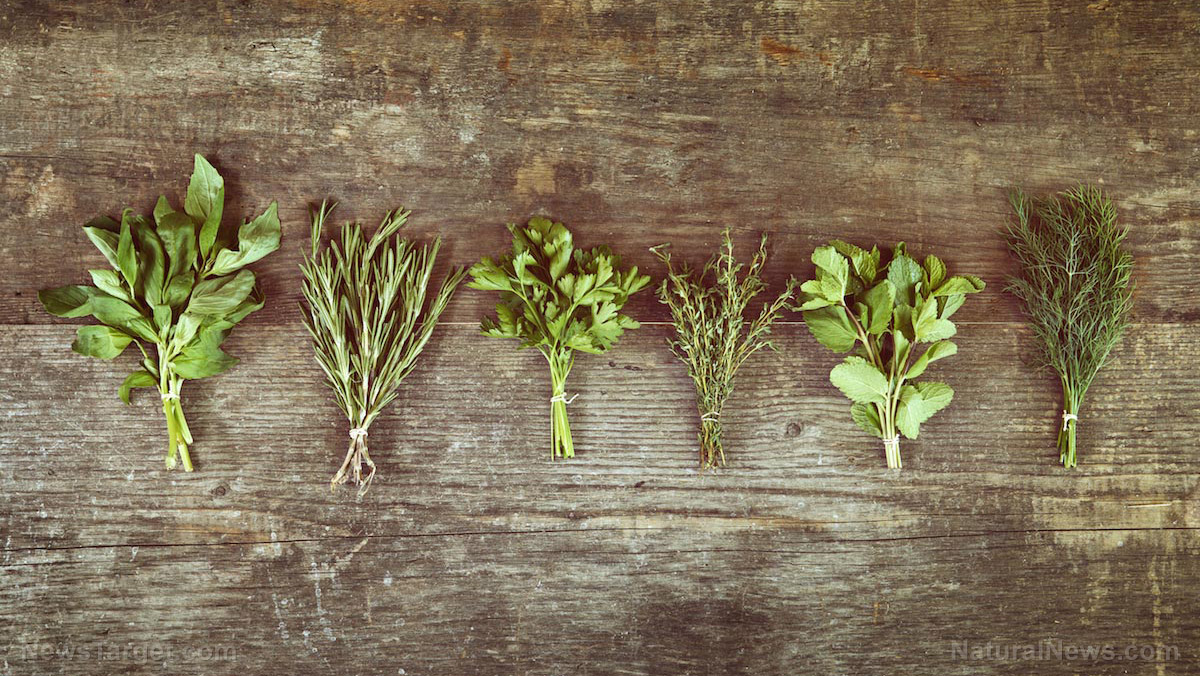Exploring the vasolidatory benefits of Rosmarinic acid
06/08/2020 // Evangelyn Rodriguez // Views
Tags: alternative medicine, angiotensin inhibitor, blood sugar, cardiometabolic health, goodhealth, goodmedicine, goodscience, Herbs, hyperglycemia, hypertension, natural cures, natural medicine, phytonutrients, prevention, remedies, research, Rosmarinic acid, vasodilator

- Herbs that belong to the Lamiaceae (mint) family, such as rosemary, sage, basil and mint, contain rosmarinic acid (RA).
- According to previous studies, RA exhibits inhibitory effects against angiotensin-converting enzyme and functions as a vasodilator.
- Angiotensin II (ANG II) is a peptide hormone linked to hypertension and oxidative stress.
- Hypertension, meanwhile, is strongly related to insulin resistance.
- To determine the effects of RA treatment, the researchers used eight-week-old rats as test subjects.
- They divided the rats into SHAM and ANG II-infused (250 ng/kg/min) groups and gave some of the mice in the second group 10, 20 or 40?mg/kg RA.
- They then evaluated the mice's body weight, liver and heart weights, oral glucose tolerance, skeletal muscle glucose transport activity and signaling proteins.
- The researchers reported that acute and chronic RA treatment decreased systolic, diastolic and mean arterial blood pressure in the rats.
- Only acute RA (40 mg/kg) treatment reduced fasting plasma glucose levels and induced skeletal muscle glucose transport.
- These effects appeared to be due to increased ERK activity in the skeletal muscles.
- Chronic RA treatment with 10, 20, and 40?mg/kg prevented ANG II-induced hyperglycemia.
Based on these findings, the researchers concluded that rosmarinic acid treatment is an effective alternative strategy for improving skeletal muscle glucose transport and protecting against ANG II-induced hypertension and hyperglycemia.
Read the full study at this link.
Journal Reference:
Prasannarong M, Saengsirisuwan V, Surapongchai J, Buniam J, Chukijrungroat N, Rattanavichit Y. ROSMARINIC ACID IMPROVES HYPERTENSION AND SKELETAL MUSCLE GLUCOSE TRANSPORT IN ANGIOTENSIN II-TREATED RATS. BMC Complementary and Alternative Medicine. 08 July 2019;19(1). DOI: 10.1186/s12906-019-2579-4
Related Topics
alternative medicine angiotensin inhibitor blood sugar cardiometabolic health goodhealth goodmedicine goodscience Herbs hyperglycemia hypertension natural cures natural medicine phytonutrients prevention remedies research Rosmarinic acid vasodilatorLatest News
Related News
07/10/2023 / By Zoey Sky
07/05/2023 / By Ethan Huff
07/05/2023 / By Kevin Hughes
07/04/2023 / By Olivia Cook
07/04/2023 / By Zoey Sky
Take Action:
Support Natural News by linking to this article from your website.
Permalink to this article:
Copy
Embed article link:
Copy
Reprinting this article:
Non-commercial use is permitted with credit to NaturalNews.com (including a clickable link).
Please contact us for more information.
Please contact us for more information.






















